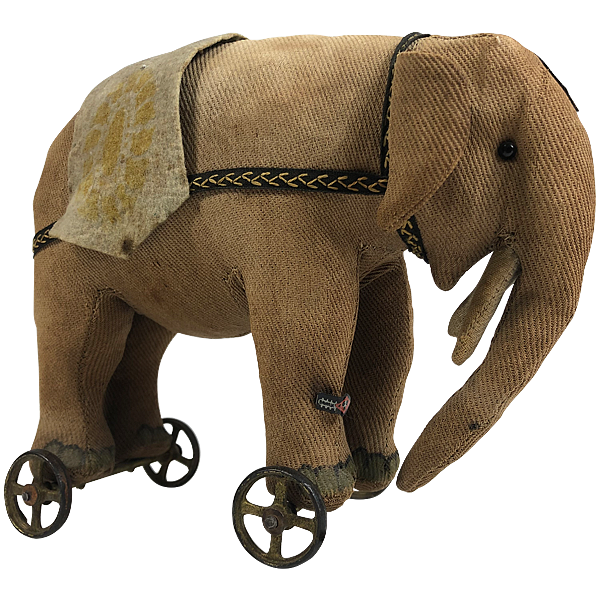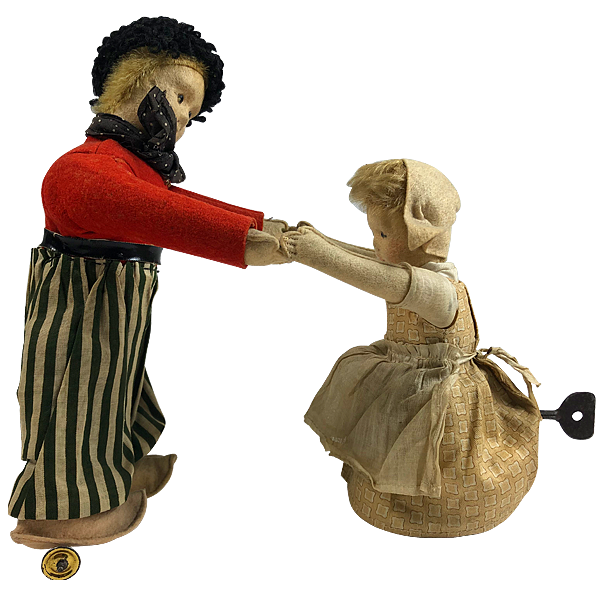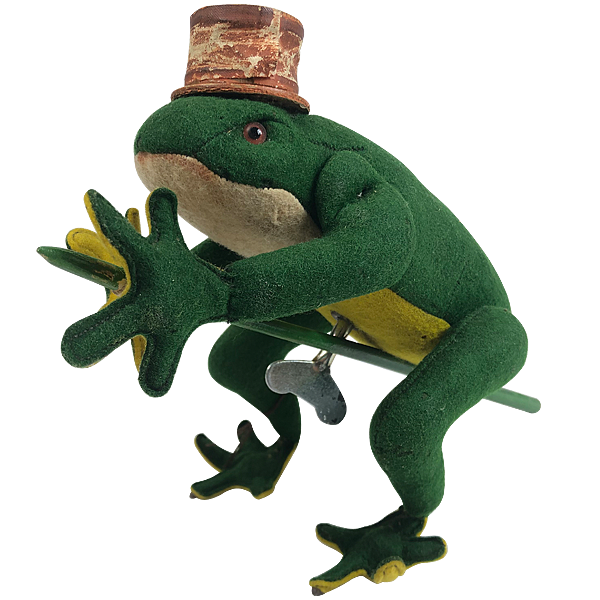 An elephant on wheels?
An elephant on wheels?
|
|
Do you mind?

Objekt:
Dancing couple on rollers
Baujahr:
1915
Beschreibung:
No catalogue record has yet been found for this extremely rare dancing couple by Bing. The clockwork drive sits in the skirt of the girl and drives a small wheel, which sets the dancing couple in circular motion. The boy goes around his little sister (?) on little roller skates. The costume suggests clientele in the Netherlands. In the museum, there is a very similar boy in the ships section. His legs have the mechanics of the Trippel-Trappel trailing animals and he is being pushed by his sailing ship. This one also has a clockwork mechanism built into it with a bottom pulley. The museum has been able to add enormously to the variety of Bing dolls, felt figures, animals and bears in recent years. Hints as well as excerpts and copies from catalogues with this kind of Bing toys are very welcome. Info on this Bing subsidiary: Bing Künstlerpuppen und Stoffspielwaren O.H. was founded on May 11, 1921 as an independent subsidiary of the Bing Group, thus complementing the doll manufacturers Kämmer & Reinhardt, which already belonged to the Bing Group, to which the porcelain doll manufacturer Simon & Halbig also belonged in the meantime. According to the company structure from 1921, Waltershäuser dolls were now a subsidiary of Bing Künstlerpuppen und Stoffspielwaren. Käthe Kruse led what was probably the most important copyright lawsuit in the history of the toy industry against the Bing corporation. The Bing corporation had begun imitating Käthe Kruse dolls on a grand scale. Käthe Kruse not only felt robbed of her intellectual work, but also considered the factory-made imitations to be particularly shapeless, soulless and empty in expression. It was not for nothing that she had decided to produce her own handicrafts, thus setting a new standard of quality. Bing, on the other hand, relied on mass production and capitalized on Käthe Kruse's good brand name by advertising with the words "Imitation Käthe Kruse dolls". Käthe Kruse turned to a Berlin law firm specializing in copyright issues and took the matter to court. At first instance, the judge ruled in favour of Käthe Kruse, but Bing won on appeal. The legal dispute dragged on until 1925, when Käthe Kruse finally won the case before the Reichsgericht in Leipzig. It was the first time that artistic copyright protection had been granted to a toy. A fundamental decision that created clear legal conditions. (Source: Kaethe-Kruse.de)





